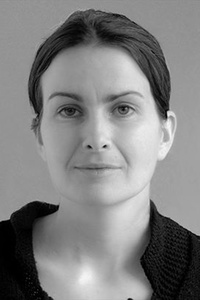Dr Jan Smitheram: On time
We set time to meet, to learn, to work and to educate. Time is also a story of anxiety – are we on time, ahead of time, pressed for time or out of time? For the most part, we respectfully observe clock time. However, time is also social: it is the affirming smile the professor gives to students who sacrifice their sleep to complete a project; it is the discussion of when to have a child (now, later, maybe never). We notice social time in the looks of colleagues as we leave work early to pick up a child. Social time is ignored when we stay at work to get the job done, “at all cost”. These examples highlight that the social time of architecture is multiple, divergent and contradictory; and its expectations and different values have the potential to clash.

Sharing anecdotes about the differing expectations of students and staff with a councillor and a support coach at Victoria University of Wellington led to a survey about workplace wellbeing and temporal expectations. I hoped to gain insight into a growing schism between staff and students’ expectations, including expectations of social time. I extended the questions to practising architects to see if students’ expectations resonated more with academics or those in practice, and to find out if academics’ expectations aligned with the profession.
One hundred and fourteen Wellington students, academics and architects responded to the survey. Although the size and the location mean that the results may not be generally applicable, the results suggest how ideas about time differ across an architectural community. And they provide a perspective for further discussion and debate.
I found that time is understood variously. Academics held the strongest belief in linear, progressive and clock-based understandings of time. The other key finding was that practitioners who negotiated work hours were more satisfied and happy than respondents who felt that they had no control over time – with academics at the top of that list.
An issue raised by students before the survey was that they felt pressure by academics and tutors to work 80 hours a week because ‘that is what an architect has to do’. But work in the profession is dependent on market conditions, where time is not a constant and some practitioners can make time work for them. Many student respondents, especially, felt pressure to work long hours; significantly, the survey indicated students who felt pressure to do so were less happy and satisfied studying architecture.
Coincidentally, the results showed that both male and female staff thought students were less committed and worked fewer hours than in their day. Significantly to current debates about work practices, academic staff did not believe that students valued work-life balance; yet students put work-life balance as a central concern. The survey suggests different expectations and a blind spot among academics.
The survey responses, while suggestive, indicate a reluctance for academics to challenge pre-emptive beliefs that architecture will always require long hours and some suffering. Academic staff, through their stories’ expectations, convey temporal attitudes to students, who internalize them and carry them into the profession. Long hours assume that people have few other commitments and responsibilities, a presumption that has equity implications for the workforce. While the 2014 Employment Relations Amendment Act provides workers with the right to a flexible work application process, the narratives and cultural beliefs at university must move in tandem with societal shifts, which acknowledge that our working and student populations are diverse.
One question that really engaged architects asked how they balanced work, home life and activities. It encouraged architects to talk about how they customized their temporal experience; it also let them consider what work-life balance means. Several respondents questioned the connections between work, family, personal interests and social or leisure activities, suggesting this was less a balance than a blend, or as one responded, like a ‘soup’. There is no one-size-fits-all approach: work and life are not separate, family and architecture do not burn off at opposite ends of the day. There is no simple trade-off. But architects, compared to academics, were more empowered.
That is not to say that long hours were not an issue; several people indicated they struggled with long hours and such expectations, with the imposition of mobile phones and with the difficulties of shutting off. However, it was significant that ‘having to work long hours’ was not the only experience of architects. Half the respondents negotiated their work hours; they managed time or made time work for them. It is important to linger on this group.
First, they ascertained why people need flexible work hours, such as care of their children while still working. Second, because those people negotiated their work hours they were able to decide what balance meant for them and declared they were happy and satisfied with their work in the profession. Of course, to negotiate work hours does not occur in a vacuum. It is easier to negotiate in an environment that eschews overwork, acknowledges that employees have work-life commitments and enables flexibility.
This survey shows that academics had the most faith in historical assumptions about architecture and a commitment to long hours. Academics, rather than offering a challenge and supporting different ways of thinking, may reinforce hierarchical and historical norms, which amplify further inequalities. Practitioners and students are more diverse, which implies shifting how they value time.
If we do not change, people may feel they do not fit in the profession, whether as students, academics or architects because they have different time needs. And if we are to think about belonging, we should note again, that those who did negotiate flexible and shorter hours were happier. Time is multiple. The reality of practice helps challenge the idea that architects work long hours for the benefit of the discipline. And it gives value to owning your time and continuing conversations around flexible work hours.
Dr Jan Smitheram is Associate Dean in the Wellington Faculty of Architecture and Design Innovation at Victoria University of Wellington where she teaches undergraduate and postgraduate students. Extending work from her Ph.D. she looks at the relationship between performance, performativity and affect within the context of architecture.
This article is a compressed version of the paper: Smitheram, J., & Nakai Kidd, A. (2019). On time within an architectural community. Time & Society, 0(0), 1–23. doi:10.1177/0961463X18820737










